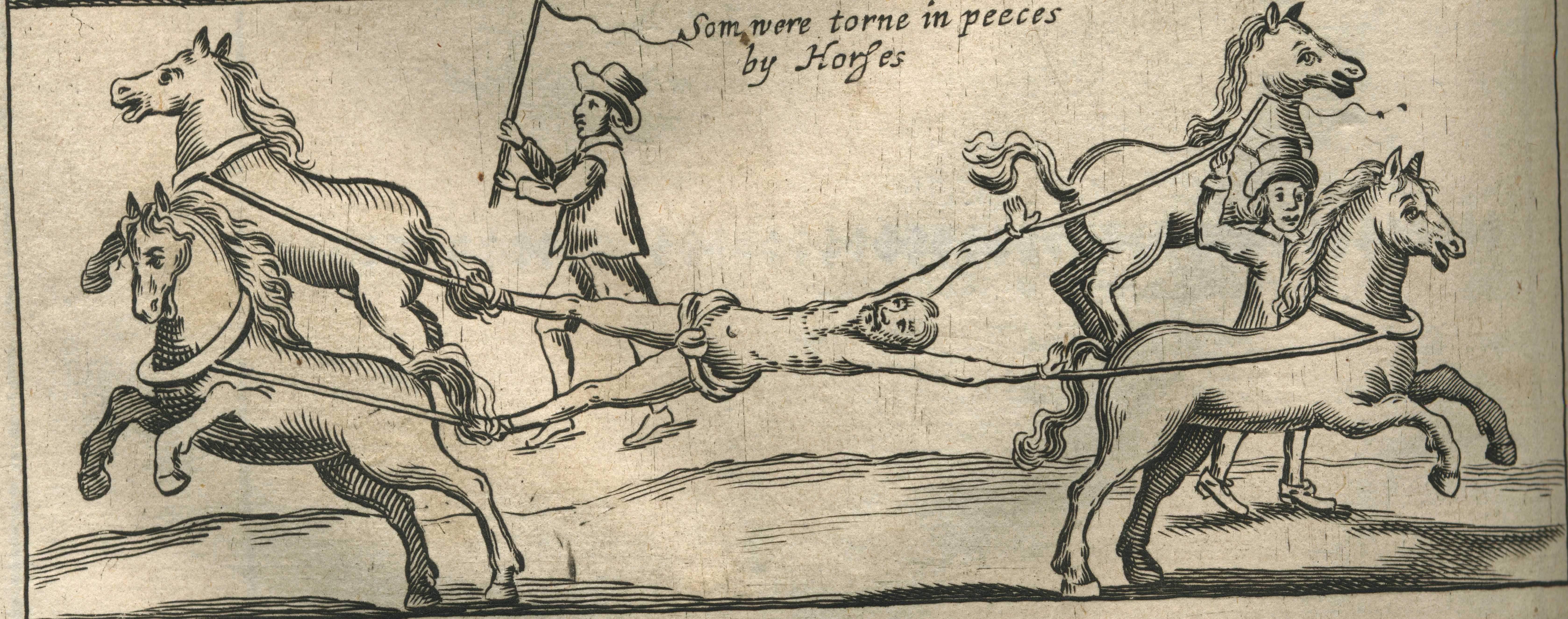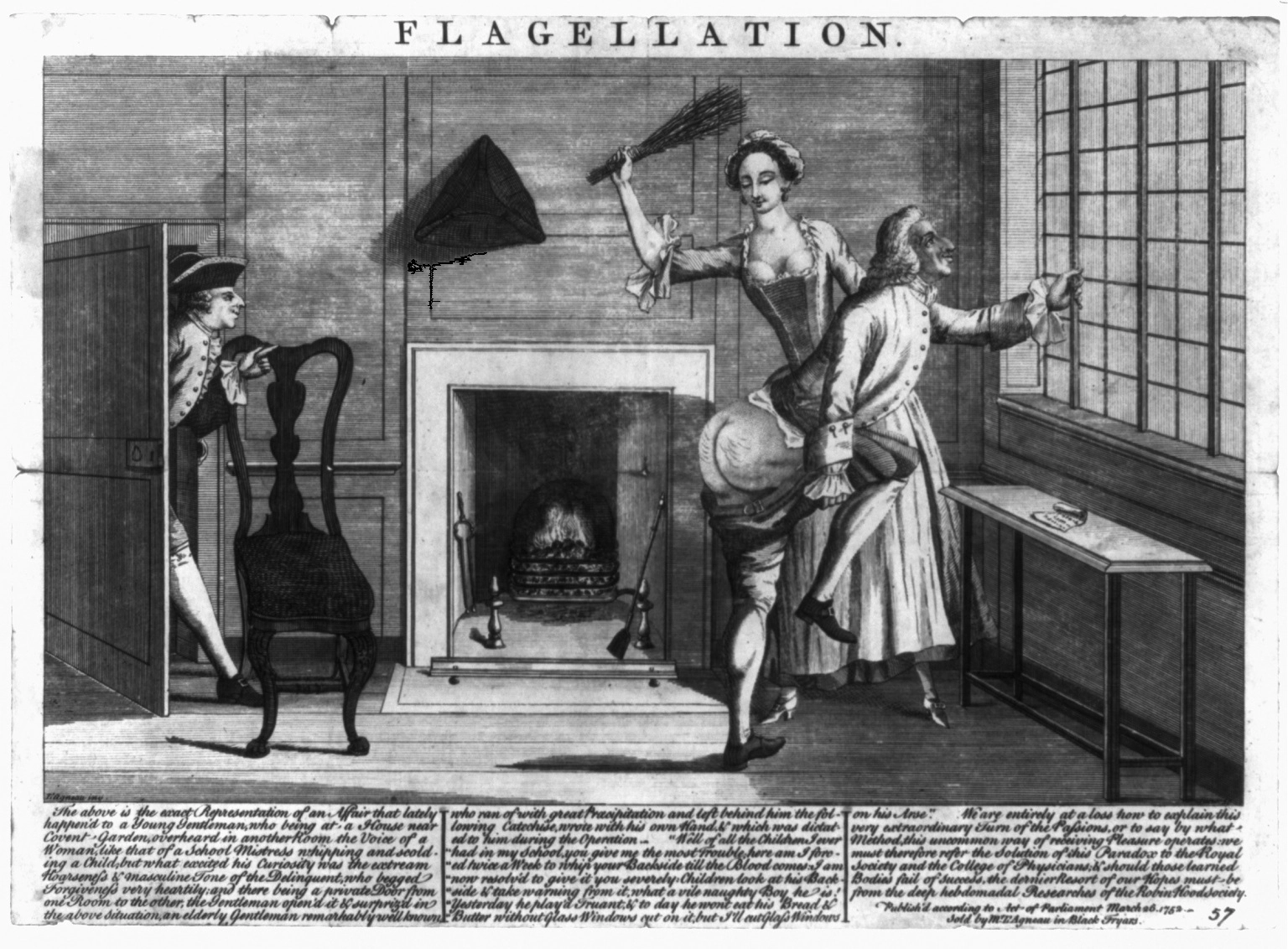[ This is an 18th century engraving and account, presented to the Royal Society and the College of Physicians, to see if they can give any explanation for such strange behaviour. Click on the picture to see an enlarged version and read the caption underneath.]
Foucault’s claims about the frankness and tolerance of early modern discourse (Michel Foucault, Histoire de la Sexualité 1: La Volonté de Savoir, Paris, 1976, p. 9.) are echoed by Toulalan, who says, ‘feelings of shame in desiring to be whipped to achieve sexual congress…are not present in earlier seventeenth-century representations, but … are stressed in Fanny Hill, suggesting that there was a fundamental shift in sensibilities between the late seventeenth century and mid-eighteenth century’ (Sarah Toulalan, Imagining Sex: Pornography and Bodies in Seventeenth-Century England (OUP, 2007, p. 92).
However, all my research suggests that Foucault got it wrong. There appears to be no documentation of sexual flagellation, in English at least, prior to about 1599, when John Davies’s intriguingly ambiguous epigram was published:
When Francus comes to solace with his whore,
He sends for rods and strips himself starke naked,
For his lust sleepes and will not rise before,
By whipping of the wench it be awaked:
I enuie him not, but wish I had the power,
To make my selfe his wench but one halfe howre.(John Davies, Epigrammes and Elegies ([London, 1599?]), sig, C3r.)
As Moulton and Bromley point out, the sense of the passage hangs on the interpretation of the expression ‘whipping of the wench’ – does she whip him, or does he whip her? (Ian Frederick Moulton, ‘“Printed Abroad and Uncastrated”: Marlowe’s Elegies with Davies’ Epigrams’, in Paul Whitfield ed., Marlowe, History, and Sexuality: New Critical Essays on Christopher Marlowe, New York, 1998, pp. 77–90; p. 86, and James M. Bromley, ‘Social Relations and Masochistic Sexual Practice in The Nice Valour’, Modern Philology, 107.4, 2010: 556–87; pp. 556–7). However, if this passage is taken in the context of other early modern mentions of sexual flagellation, all the weight of the argument comes down on the side of the wench whipping the man. Pico describes the behaviour of the sexual flagellant as a ‘strange sickness’ (‘insolitæ pestis’, Pico de la Mirandola, Disputationes Aduersus Astrologiã, Bologna, 1496, sig. h5r). Meibom, in his 1639 treatise on the phenomenon of sexual arousal by whipping comments on Pico’s and other similar anecdotes, saying:
Let us rejoice that in our Germany these crimes of perverse lust, these affronts to our children…are unknown, or, if perpetrated by anyone (if by chance such a case should come to light), it will be severely punished by avenging flames [that is, the offender will be burnt].
(Johann Heinrich Meibom, De Flagrorum Usu in Re Veneria et Lumborum Renumque Officio, Epistola, Leyden, 1639, p. 16. My translation.)
Davies’s lampoon can be seen as the first of a number of rhymes about the ‘flogging cully’, of which perhaps the most detailed is a late seventeenth-century account of a ‘Bumkin Lout’, who
… beg’d for Rods, would madly rail,
If Lictors with Rods did not brush his Tail …
And so furious was the Lown,
That he must see the Blood run down.
Thus he delighted above measure,
To feel at once both Pain and Pleasure.
The more tormented, the more he itcht,
None can say, but he was bewitcht.
He was conjur’d into Venus Arms,
No otherwise than by Whipping Charms.
We taught him upon Rue to feed,
To stop the Urine of his Seed,
For fear their should be more of his Breed.(Robert Dixon, Canidia, or, The Witches a Rhapsody, in Five Parts, London, 1683, p. 96.)
There is a pattern here: Pico describes a male sexual flagellant as suffering from a sickness, Meibom rejoices that, were such a case to occur in Germany, the culprit would be burned, and Dixon’s flagellant is fed rue to prevent him passing on his proclivities to the next generation. Casaubon, too, describes a similar case as being ‘infected’ with a ‘phrenzie’ (Meric Casaubon, A Treatise Concerning Enthusiasm, London, 1655, p. 20). All the examples I unearthed are of a similar nature, indicating a general opprobrium attached to the sexual flagellation of males, with no significant change of attitude according to the period or to the geographical location. In this context, it seems reasonable to suppose that Davies would want to take the whip and beat Francus himself, but very unlikely that he would admit to wanting to be beaten by him.
(Adapted from Part 1, ‘The Suffering Self’, Chapter 3, ‘Polemic, Pornography and Romanticism: The Subversion of Catholic Asceticism’)



Comments